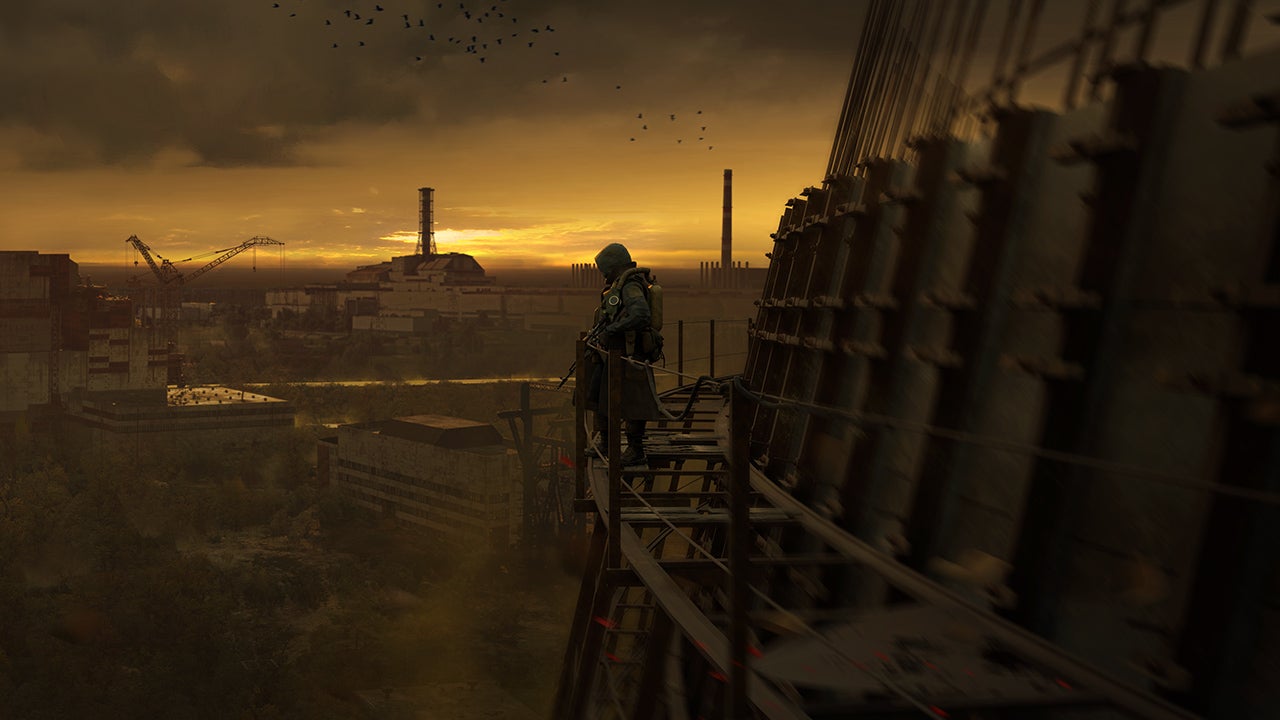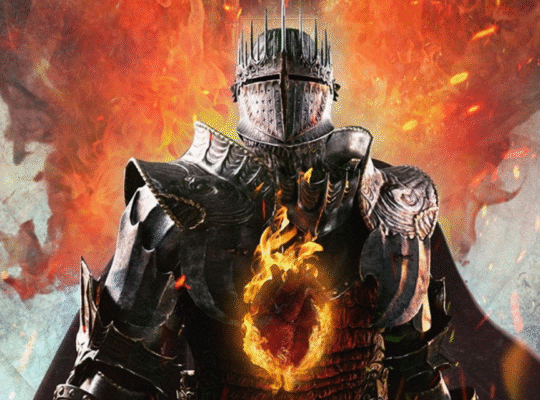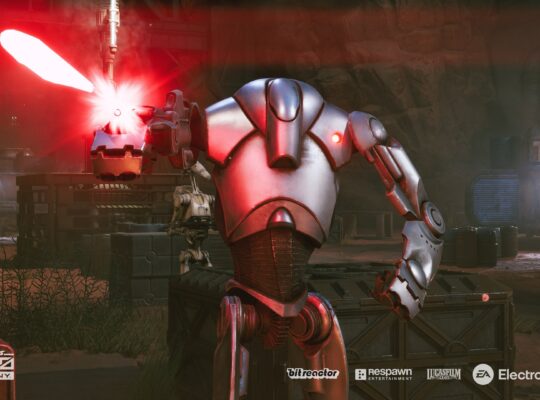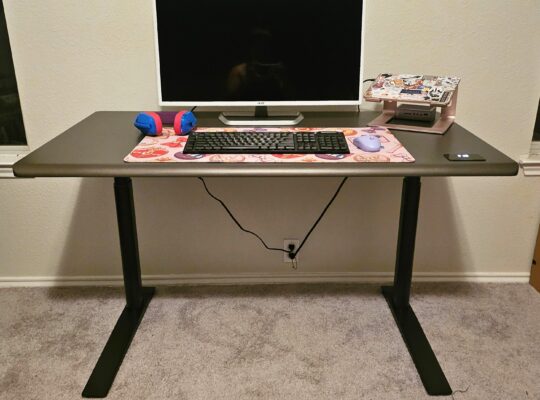A certain kind of friction can go a long way in creating a challenging and punishing game that’s also gripping. When developers leave you to figure things out for yourself amid dangerous enemies that can kill you on a moment’s notice, rarely giving you an easy way out of a mess, it becomes clear that the survival instincts embedded in the STALKER series are very much alive in the long-awaited STALKER 2: Heart of Chornobyl. Then there’s the type of friction that prevents you from engaging with it in earnest, like poor technical performance, bugs that are sometimes hilarious but at others game-breaking, or nonsensical enemy behavior. STALKER 2 has both kinds of friction in equal measure. It just can’t stop getting in its own way, but for all that’s working against it, there’s an underlying greatness that surfaces every now and then.
STALKER 2 is a massive game; as of this writing, I’m about 20 hours into my playthrough and still have so much left to do in The Zone in both the main story questline and in side missions that I’m having to squint to see a light at the end of the tunnel. Due to the review copy coming in just a week before launch and a progress-halting bug in the main mission (which cost me a day of playtime and required me to reload a previous save that made me lose about four hours of progress in order to avoid it), I haven’t been able to finish it in time to give you a final verdict at launch. And for a series like STALKER, where the resolutions to the story’s mysteries are inherent to how it’s earned its cult following, seeing it to the end is of utmost importance, regardless of the roadblocks I have to truck through to get there.
The Chornobyl Exclusion Zone – the site around the tragic, real-world 1986 nuclear meltdown – remains the heart of STALKER, both as a brutal and sometimes stunning open world, and a fascinating setting that’s integral to Ukrainian history. Physics-defying anomalies work as deadly hazards scattered around its huge map, while equally dangerous mutated wildlife lurk about and supernatural phenomena amid the nuclear fallout instill a sense of danger around every corner. Stalkers – mercenaries who make a living in The Zone taking on risky jobs – from various factions are also on the hunt throughout; it’s a harsh place to eke out a living.
In that respect, STALKER 2 is a masterclass in atmosphere: stunning dynamic weather, pitch-dark nights, and radioactive storms that paint the sky a hellish red or toxic green keep things both eerie and threatening in different ways over time. Even something as small as hearing the patter of rain from inside a dilapidated ship pulls you into Chornobyl’s wasteland. It’s familiar to anyone who’s played the original STALKER series (Shadow of Chornobyl in 2007, Clear Sky in 2009, and Call of Pripyat in 2010) and as a veteran of those games myself, it’s an odd comfort to be back in The Zone.
The main story provides a throughline to follow, but it isn’t the kind of thing that’s going to light a fire under you in its early hours. Skif – our character – is set up and betrayed in the opening mission, which leads him down a rabbit hole that ropes in the scientific organization SIRCAA and the Zone’s de facto military, a group known as The Ward. I don’t always need a grand adventure or virtuous purpose, but it was a little underwhelming that many of the goals in the beginning boil down to finding a guy who knows where to find another guy, becoming a continuous chain of finding more guys in hopes of finally finding the actual guy you’re looking for. Fortunately, once STALKER 2 got off the ground it started weaving in the familiar themes seen in the previous games, such as finding the truth about mind-bending psi emissions, the risks with research in The Zone, and cultish groups clashing with governmental organizations. Then it started to pick up steam.
Games like STALKER are quite rare to see at this scale these days, and even 14 years since its last iteration, STALKER 2 retains a lot of the design principles of the series – for better and worse. It leans into mechanics we commonly see in hardcore survival games nowadays, putting you into situations where you must make deliberate decisions on how to engage enemies and which environments to explore. There’s gear wear that can cause malfunctions, high damage in combat so just a few hits can kill you, bleeding wounds if you survive that, hunger to keep at bay, radiation levels to hold down, limited inventory weight to manage, and constant looting in order to survive. It’s inelegant, though at times I mean that as a compliment because I admire how very little is streamlined. I started to see how its systems come together after enough poking and prodding and managed to find the type of friction I enjoy.
Much like in a harsh world like Dragon’s Dogma 2, there’s no easy fast travel around The Zone, so if you want to get from place to place quickly you need to find the right NPC and pay up. If you go on foot, you’re in for a long trek with rogue Stalkers, anomalies, and mutants who can stop you in your tracks. (Not going to lie: save scumming will stave off some of that potential frustration, and I’m not too proud to make use of it.) This isn’t an RPG in a gameplay sense either, so there are no progression systems or skills to unlock other than the constant hunt to find good gear, upgrade it at shops, and pack just enough items to survive while staying nimble. Side quests can bring in some much-needed cash or lead to rare loot, or they may not even pay off in a tangible way. However, there is sometimes an intrinsic value in the exploration of The Zone, even if only a handful of those side quests have actually been worthwhile.
Combat has bounced between being intense, high-stakes shootouts or unsatisfyingling unfair futility. The main difference between those two scenarios is in the bizarre behavior of the enemy AI. Regardless of the difficulty setting, enemies are often dumb as rocks, walking in nonsensical patterns while engaged and completely unaware of their surroundings. Yet their immediate pinpoint accuracy and near-perfect vision (even in pitch darkness) still make things tough, and not in ways that make sense. Erratic mutant movement is more annoying than it is challenging, and takes off a bit of the horror-ish edge that they sometimes instill. I’ve seen more believable and consistent enemy behavior from the old STALKER games, so it’s disappointing to see steps backward more than a decade later.
There are bright spots within those combat encounters, though. I’ve learned to work within the confines of the sporadic bad guys, always ready to patch up and heal to survive and take precise shots from smart positions. Sometimes fights break out from dialogue gone awry and enemies are very quick on the draw, and I just had to concede the fact that I would take massive damage if I survived at all.
STALKER 2’s solid gunplay picks up a lot of the slack in its combat’s faults. Whipping around a decked-out assault rifle with a nice red dot sight to make headshots easy, or pumping shells into a mutant from a fully modded shotgun and slowing its charge with their impact had me looking forward to those high-stakes, kill-or-be-killed situations.
Within those highs, however, is the frequent reminder that STALKER 2 isn’t in great technical shape. Even on a PC with an RTX 3080, a 13th-gen Core i7 CPU, 32GB of RAM, and an NVMe SSD, it chugs on modest settings. Playing with everything on low graphics options and balanced DLSS gives me similar frame drops and large-scale hiccups as it would on medium-high settings and higher quality DLSS, even if the baseline frame rate is marginally better (but still well below a consistent 60fps).
The fact that poor technical performance on PC is the least of my worries says a lot about how STALKER 2 is in desperate need of patches. These problems include (but are not limited to) NPCs walking through walls, textures artifacting, sound effects and dialogue happening out of place, environmental details erratically popping in and out, or objects clipping through each other. Inoffensive, non-critical bugs can be whimsical in some sense – like when an enemy’s body cartwheels into the sky after being shot – and simply accounted for as unexplained phenomena as you focus on the tasks at hand, but the frequency and severity chipped away at my enthusiasm for STALKER 2, especially when it came to glitched quest objectives that wasted my time.
It’s hard to say whether or not things will be patched by the time it’s released into the wild today, I just hope that the worst game-breaking bugs I encountered can be resolved in due time. During my playthrough, I once had an objective to meet with an NPC inside a building, only to find I could not interact with any of the doors to get in. After a minute of being in the area I was teleported inside the building, but there were no dialogue options that could progress the mission with the NPC in question. The only way to work around this was to go back to a save from four hours prior and make a different story decision so the proper triggers would initiate in subsequent quests. There have been other instances like this with sidequests, but those are less critical since I could just ignore them and move on if an objective didn’t trigger or change after completing what I was tasked with, but that’s an aggravating way to play a game. It’s bugs like that that truly keep STALKER 2 from really coming together. It feels as though it’s held together by duct tape – and given the stories about its development, it’s not hard to understand why.
There are times when everything is working – or working well enough, at least – when STALKER 2 is a rare treat that scratches the same itch of those older PC games, where the onus was on you to figure out how to survive and thrive in an unforgiving place that doesn’t care about you. Considering that there’s so much more left to play, I still have hope that it’ll be somewhat smoother sailing ahead, because as I’ve gotten further in the main story, the more intriguing its dilemmas and combat encounters have become. So far, however, I’ve had to fight against STALKER 2 itself as much as I’ve had to fight against all the enemies and anomalies that litter The Zone. Sometimes it makes no damn sense; it compels me, though, and I’ll see this through to the end and get back to you with a final review as soon as I can.












